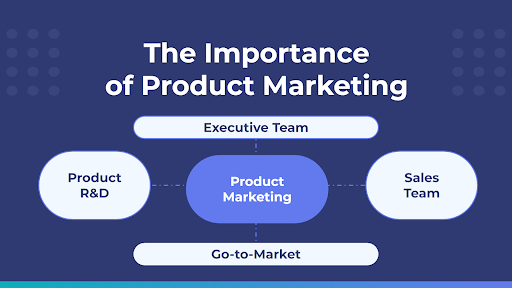I’ve said it before, and I’ll say it again, teams being siloed is one of the biggest problems for generating a consistent pipeline. Last time, I shared how your RevOps team can help bridge the gap between sales and marketing. Today, I want to go over how careful product marketing connects your product team to the rest of your pipeline generation teams.
What does product-market fit have to do with pipeline generation? Any time you are starting a new business, product, or even a new product tier, you need to establish your product-market fit before worrying about generating pipeline.
You should know and be confident in your product-market fit before launching marketing campaigns and chasing deals. Taking the time to go slow can be challenging. You’re excited and want everyone to know about (and purchase) your new product or service. But by having a product marketing lead and talking to your product team, you’ll be prepared to know exactly where you’re going and how you’ll get there.

If you want to build a road between two cities, you don’t immediately start cutting down trees and paving. You look over the landscape with your engineers and find the best route.
How Do You Check Product Market Fit?
You want to know if your new product (business, product line, tier of service, etc.) is quantifiable (has a defined Ideal Customer Profile) and personal (has a defined brand voice).
Have your product marketing leader sit down with your product team and learn exactly what the product can do for someone, the requirements for using it, and other in-depth details. Who leadership and marketing initially thought of selling to might not be the best fit for what has been made.
Next, you can take the details from your product team and use them to shape your initial Ideal Customer Profile (ICP). Later you can adjust based on results, but you want the best strategy at the product launch. With your product details, you can use SalesIntel or a similar tool to research who fits your ICP. You’ll want access to firmographic, technographic, and buying intent to know the exact number of people who can use your product and who they are.
For example, let’s say you’ve made an app for managing several social media accounts efficiently. You want to adjust your target market for your product from any company that manages social media, to your product being for companies already equipped with Salesforce or similar CRM, have over 100 employees, are in industries where a single company is managing multiple brands, has already purchased at least one tool for social media, and ideally are already searching for better social media options.
You’ve gone from your product fitting almost any company to having an exact list and a specific number of companies to target. With knowledge of who your potential customers are, you can directly address them with your branding. In our social media example, you’re going after more prominent brands that likely use a competitor. So, you could position yourself as the simpler, easier-to-use option. Or maybe you want to be the highly technical and insightful brand that gets into the nitty-gritty.
You are not entering the market to see who happens to be attracted to you. You are going after target companies with an appealing and attention-grabbing message.
Your Product Team Never Stops Being Part of the Conversation
Once you get your new product off the ground, everyone tends to get into a groove and routine. The RevOps and customer-facing side of the company hear what prospects and customers want from product updates and then pass those requests to the product team.
The product team then does its best to answer the requests. But it’s easy for disconnects to happen. RevOps can be unaware of how complex or time-consuming a new feature or bug fix can be. The product team might now know how to prioritize all the requests they’ve received.
Here’s where your product marketing leader comes in. They serve as the bridge between each team to clarify priorities and changes needed to drive revenue. Product marketing teaches the marketing and sales teams why new features and updates are valuable. They can help the product team make sense of their requests and understand the actual needs of customers instead of what customers think they need (two very different things!).
The product team needs to always be invited to the table. They have as much insight into company growth as anyone else.
Alignment Drives Growth
Company growth comes from each team working in sync. Everyone needs to be on the same page about your target customers and how you will win their attention. By connecting the product team and RevOps, you establish your product-market fit, brand voice, and goals for each team.
Everyone works together to grow your revenue pipeline, including your product team.
Summary
Product marketing informs other important parts of your GTM team. They need to be front and center to help with internal communications and continued education for your team and your market.
- Clearly define your ideal customer profile to ensure product market fit from your MVP
- Invite product marketing leaders to the table to help translate product features into GTM messaging
- Keep product marketing at the heart of internal communications for continued alignment





